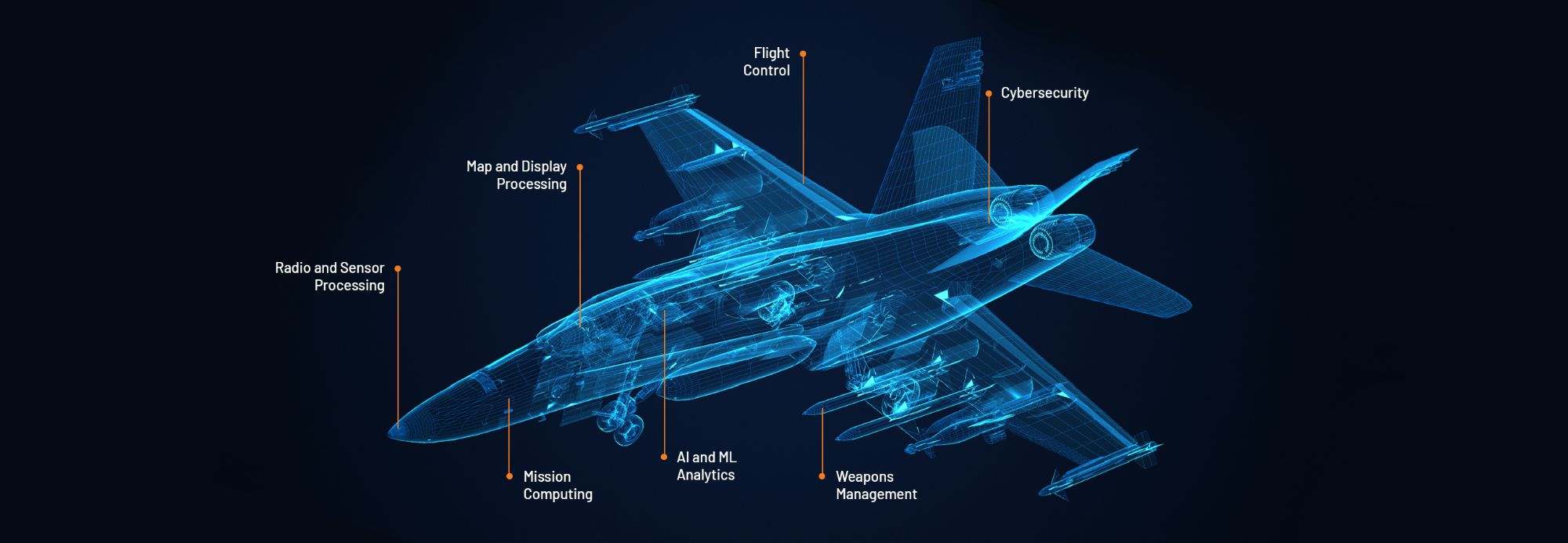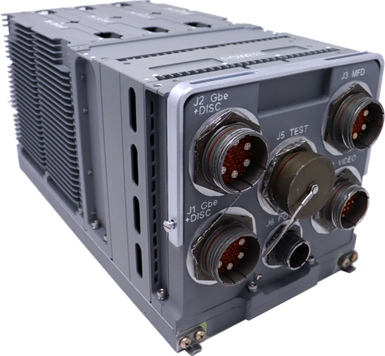It can cost over $2B to maintain technology on a modern aircraft
JARVIS was designed to solve that problem
With a unique software-defined hardware architecture, JARVIS is a revolutionary approach to mission computing.
Based on identical, reconfigurable and self-testing “JARVI” modules JARVIS reduces sustainment costs, speeds integration, reduces risk and accelerates the deployment of airborne applications. Aligned to the FACE technical standard, JARVIS seamlessly integrates into existing aircraft computing ecosystems.

Meet JARVI. The Heart of JARVIS.
Each JARVI compute module is a low-power individual high-performance compute node that can be deployed standalone or combined with other JARVI modules to form a powerful mission computer. JARVI modules are dynamically reconfigurable. Even the backplane interconnect is software selectable between Ethernet and ARINC/AFDX. JARVI modules are smart enough to self-diagnose errors and failover in real-time. They allow for remote control and monitoring and each JARVI module is field replaceable at Organization-level (O-level), making JARVIS computers simple and cost-effective to maintain.
Thank you! We have received your message and will be in touch with you shortly.

Reduce Risk
With a smart, automated failover mechanism JARVIS identifies, prioritizes, and distributes application resources to healthy modules if a module stalls or fails.
This shortens ground time and ensures critical flight applications remain online even if other systems go offline. One spare JARVI module delivers quadruple (4n) redundancy. JARVIS is delivered with complete DO-254 and DO-178 artifacts certifiable up to DAL-A to streamline the certification process and mitigate operational risk. FIPS 140-2 and NSA Type-1 advanced encryption options protect mission systems and data.

One System. Infinite Possibilities.
The JARVIS architecture is flexible enough to provide high-performance computing for manned and unmanned rotary and fixed-wing aircraft, ground vehicles and other platforms. JARVI modules can be programmed to take on a range of personalities and assembled together into a JARVIS system that delivers mission management, platform management, flight maintenance, navigation, sensor fusion the list goes on. Additionally, the reconfigurability and upgradeability of the JARVIS architecture future-proofs the platforms that deploy it.

FEATURED PRODUCT
JARVIS Mission Computer, BuiltSAFE
Accelerate critical airborne workloads with a DAL-A certifiable, quadruple redundant computer aligned with the FACE™ technical standard featuring 4 ARM Cortex-A53 processors, 64 GB DDR4 memory, and advanced encryption.
Proven Airborne Computing
Tackle Complex Avionics Applications
Our scalable mission computers minimize lead time and cost, mitigate program risk and ensure rapid and successful aircraft certification.

